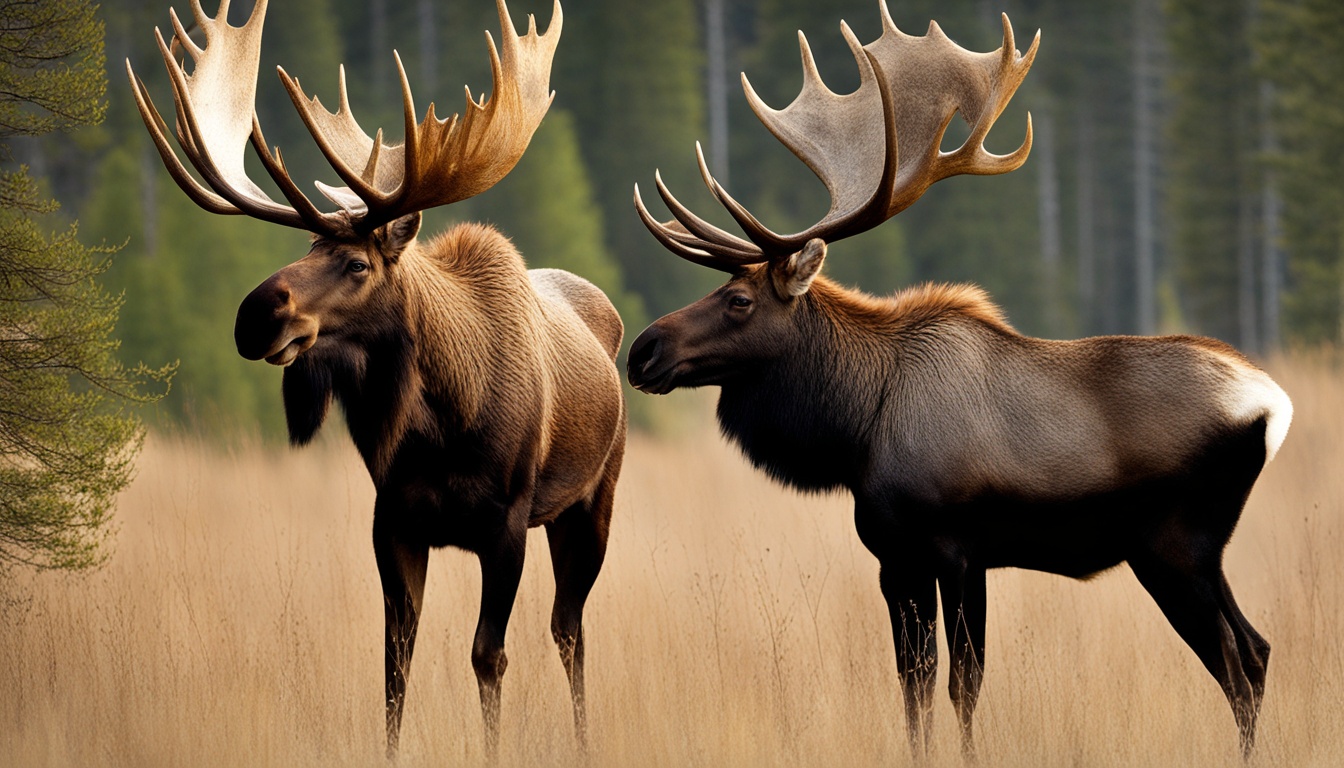Welcome to our article on the fascinating relationship between giant pandas and bamboo forests. In this section, we will explore the impact of giant pandas on their habitat and the broader bamboo forest ecosystem. Discover how these adorable creatures shape the environment and contribute to the delicate balance of nature.
As you delve into the world of pandas, you’ll uncover the unique role they play in maintaining the health of bamboo forests. With only about 1,800 wild giant pandas remaining, they primarily inhabit a series of reserves, which are being woven together into a “Giant Panda National Park” in China. This conservation initiative aims to protect their habitat and ensure the sustainability of bamboo forest ecosystems.
Join us as we explore the challenges and triumphs of panda conservation efforts, the impact of habitat loss and fragmentation, the importance of bamboo forests, the role of giant pandas in seed dispersal, and much more. Together, let’s discover the wonders of nature’s diversity and the importance of protecting these iconic species and their bamboo forest habitats.
The impact of habitat loss and fragmentation
Giant panda numbers have seen an increase in recent years, but habitat loss and fragmentation continue to pose significant threats to this iconic species. Despite China’s efforts in establishing 67 panda reserves, logging, agriculture, and infrastructure development still contribute to the gradual disappearance of vital panda habitats. These activities not only reduce the available living space for pandas but also isolate populations, making it difficult for them to breed and access abundant bamboo resources.
Fragmentation of panda habitats hampers their ability to migrate to new areas when bamboo die-offs occur naturally. These die-offs, which happen every few decades, disrupt the pandas’ food supply and force them to find alternative sources. However, with fragmented habitats, pandas struggle to find suitable bamboo stands, resulting in potential food shortages and decreased reproductive success.
Table:
| Habitat Loss Factors | Impact on Giant Pandas |
|---|---|
| Logging | Reduces available habitat and disrupts natural bamboo growth |
| Agriculture | Encroaches on panda habitat and contributes to habitat degradation |
| Infrastructure Development | Fragmentation isolates panda populations and hinders migration |
| Bamboo Die-Offs | Pandas struggle to find new bamboo sources due to fragmented habitats |
It is crucial to address habitat loss and fragmentation to ensure the long-term survival of giant pandas. Conservation efforts should focus on preserving and connecting existing panda reserves, as well as promoting sustainable land use practices that minimize habitat destruction. By safeguarding the pandas’ habitat, we can protect not only this beloved species but also the delicate balance of the bamboo forests and the diverse ecosystems they support.
The importance of bamboo forests
Bamboo forests are one of the most important ecosystems on the planet. They are not just a food source for giant pandas; they also play a crucial role in maintaining biodiversity and the health of our environment. These forests provide habitat for a wide variety of wildlife species, including birds, insects, and other mammals. The dense vegetation of bamboo forests offers shelter and protection, creating a thriving ecosystem that supports numerous species.
Furthermore, bamboo forests contribute to reducing land degradation and stabilizing slopes. The extensive root systems of bamboo plants help prevent soil erosion, holding the soil together and preventing landslides. This is especially important in areas prone to heavy rainfall or on steep slopes. Bamboo forests also sequester carbon dioxide, helping to mitigate climate change by reducing greenhouse gas emissions.
In addition to their ecological importance, bamboo forests have also become a hotspot for eco-tourism. People from around the world are drawn to the beauty and tranquility of these forests, as well as the opportunity to see giant pandas in their natural habitat. Eco-tourism has emerged as a way to support conservation efforts and local economies. Visitors can experience the wonders of bamboo forests while contributing to the preservation of these valuable ecosystems.
Bamboo forest habitats and adaptations
Bamboo forests have unique characteristics that allow them to thrive in various environmental conditions. They are incredibly adaptable and can be found in diverse ecosystems, ranging from tropical regions to high-altitude mountainous areas. Bamboo plants have evolved to survive in different climatic conditions, demonstrating their resilience and ability to withstand extreme temperatures and seasonal changes.
Bamboo forests are also known for their rapid growth. Some bamboo species can grow up to 35 inches in a single day, making them one of the fastest-growing plants on Earth. This remarkable growth rate ensures a continuous supply of bamboo shoots, which are a vital food source for giant pandas and other wildlife.
Overall, bamboo forests are an essential part of our planet’s ecosystems. They support biodiversity, mitigate climate change, and provide economic opportunities through eco-tourism. Protecting and preserving these forests is crucial for the well-being of not only the giant pandas but also the entire ecosystem that relies on them.
Seed Dispersal and the Role of Giant Pandas
Giant pandas, with their unique habits and movements, have a significant impact on seed dispersal within their habitat. As they move through the bamboo forests, seeds and plant matter collect on their fur, enabling the circulation of seeds throughout the ecosystem. This serves as an essential mechanism for the regeneration of the bamboo forest and the preservation of its biodiversity.
Additionally, giant pandas contribute to seed dispersal through their swimming and climbing abilities. While pandas are primarily terrestrial animals, they have been observed swimming in rivers and climbing trees. These movements help spread seeds to new areas, allowing for the expansion of bamboo forests and the establishment of new habitats for various wildlife species.
Seed dispersal by giant pandas is a crucial ecological process. Their movement patterns and behaviors contribute to the distribution of plant species and the maintenance of healthy ecosystems.
Although giant pandas are mostly solitary animals with defined territories, their seed dispersal activities benefit the bamboo forests as a whole. By facilitating the distribution of seeds, pandas play a vital role in the sustainability and resilience of the bamboo forest ecosystem. This highlights the intricate relationship between giant pandas and their habitat, emphasizing the importance of protecting and conserving both for the benefit of biodiversity and the environment.
Table: Panda Seed Dispersal Mechanisms
| Seed Dispersal Mechanisms | Description |
|---|---|
| Fur-based dispersal | Seeds and plant matter hitch a ride on the pandas’ fur as they move through the bamboo forests, aiding in seed circulation. |
| Swimming dispersal | Occasionally, pandas swim across rivers, facilitating the spread of seeds to new areas adjacent to water bodies. |
| Climbing dispersal | Giant pandas are capable climbers and can ascend trees, aiding in seed dispersal to elevated areas of the forest. |
Through these various seed dispersal mechanisms, giant pandas contribute to the ecological integrity and sustainability of their habitat. Understanding and protecting these unique behaviors are crucial for preserving the bamboo forest and ensuring the continued survival of the giant panda population.
Conservation Efforts and Population Growth
Conservation efforts have played a significant role in the preservation and population growth of giant pandas. These iconic and endangered species have seen a remarkable increase in numbers, with a population growth of almost 17% over the past decade. The Chinese government, in collaboration with various organizations and institutions, has implemented a range of conservation programs aimed at protecting pandas and their habitat.
One of the key initiatives is the establishment of panda reserves, which now count 67 in total. These reserves serve as protected areas where pandas can thrive and breed. Logging in these areas has been banned, ensuring that the natural environment remains undisturbed and suitable for pandas. Furthermore, strict laws and public awareness campaigns have helped reduce poaching for fur, a major threat to pandas in the past.
These conservation efforts have not only resulted in an increase in panda numbers but have also led to an improvement in their conservation status. In 2016, the International Union for Conservation of Nature (IUCN) changed the classification of giant pandas from “endangered” to “vulnerable.” While this is a positive development, it is essential to continue the conservation programs and preservation initiatives to ensure the long-term survival of these magnificent creatures.
| Conservation Efforts and Population Growth | Data |
|---|---|
| Population Growth Rate | Almost 17% over the past decade |
| Number of Panda Reserves | 67 |
| Impact on Conservation Status | Changed from “endangered” to “vulnerable” by the IUCN in 2016 |
Preserving these endangered species is not only crucial for their own survival but also for the wider preservation of biodiversity. Giant pandas and their habitat are integral to the health and balance of the ecosystems they inhabit. By protecting pandas, we safeguard the bamboo forests they rely on, which, in turn, benefit numerous other species and contribute to the overall well-being of the planet.
Giant Panda Conservation Programs
- Panda reserves: Establishing protected areas for pandas and banning logging
- Poaching prevention: Strict laws and public awareness campaigns to reduce poaching
- International collaboration: Working with organizations and institutions to support conservation efforts
- Habitat preservation: Implementing measures to protect and restore panda habitats
- Research and monitoring: Studying pandas and their behaviors to inform conservation strategies
“Conservation is our responsibility. Giant pandas are a symbol of global conservation efforts, and by protecting them, we protect a part of ourselves and ensure a better future for generations to come.” – Conservationist

The unique characteristics of giant pandas
Giant pandas are truly remarkable creatures, with a set of unique characteristics that set them apart from other animals. These iconic creatures are easily recognizable by their distinctive black and white coat, which acts as effective camouflage in their bamboo forest habitat. The panda’s rotund body and adorable appearance have earned them the nickname “living teddy bears.”
One of the most fascinating traits of giant pandas is their specialized diet. Bamboo constitutes 99% of their diet, and they consume vast amounts of it daily. This diet is made possible by the panda’s specialized skeletal structure, particularly its paw. A panda’s paw features an elongated wrist bone that functions like a thumb, allowing them to efficiently grip and strip bamboo stalks.
When it comes to reproduction, giant pandas face unique challenges. Female pandas have a short and unpredictable window of fertility, which occurs only once a year for a few days. Additionally, pandas have one of the lowest birth rates among mammals. Females give birth to twins in around half of pregnancies, but due to limited milk supply, they typically only raise one cub.
The importance of panda conservation
Giant pandas are an endangered species, and their preservation is of utmost importance. Their unique characteristics and essential role in the bamboo forest ecosystem make them vital to maintain biodiversity and ecological balance. By protecting pandas, we not only secure the future of this incredible species, but also contribute to the health and sustainability of the bamboo forests they rely on.
| Panda Characteristics | Diet | Reproduction |
|---|---|---|
| Distinctive black and white coat | 99% bamboo | Short fertility window Low birth rate |
| Rotund body | Specialized paw for bamboo gripping | Females give birth to twins |
| Nicknamed “living teddy bears” | Limited milk supply, typically raise one cub |
It is crucial to continue supporting conservation efforts and raise awareness about the importance of panda conservation. By safeguarding their habitat, implementing sustainable practices, and promoting responsible tourism, we can ensure a brighter future for these incredible creatures and the delicate bamboo forests they call home.
The impact of human activities on pandas and bamboo forests
Human activities have a profound impact on the survival of giant pandas and the delicate balance of bamboo forests. Mining, hydro-power projects, hunting, tourism, poaching, and deforestation all contribute to the destruction of their habitats, leading to habitat loss, disturbance, and fragmentation.
Mining operations, particularly for valuable minerals, often result in the destruction of large areas of bamboo forests and the displacement of pandas. Hydro-power projects, while renewable sources of energy, can cause the flooding of bamboo forests and disrupt the natural flow of rivers, affecting the pandas’ access to food and water sources.
“Mining and hydro-power projects have direct and indirect consequences on panda populations and their habitats. The destruction and alteration of bamboo forests pose serious threats to the survival of these iconic species.”
Unregulated hunting and poaching continue to harm panda populations, although conservation efforts have helped reduce the incidence of poaching. The illegal wildlife trade still poses a significant threat, with pandas being targeted for their fur, bones, and other body parts. This, coupled with accidental injuries caused by traps set for other animals, further endangers these vulnerable creatures.
Tourism, while generating economic benefits, can also have negative impacts. Large numbers of visitors can disturb pandas, disrupt their feeding and breeding patterns, and degrade their habitats. Furthermore, deforestation for timber, fuel wood, agriculture, and infrastructure development destroys vast areas of bamboo forests, leaving pandas with limited resources and disrupting the delicate balance of the ecosystem.
The Impact of Human Activities on Pandas and Bamboo Forests
| Human Activity | Impact on Pandas and Bamboo Forests |
|---|---|
| Mining | Destruction of bamboo forests, displacement of pandas |
| Hydro-power projects | Flooding of bamboo forests, disruption of natural flow, limited access to food and water |
| Hunting and poaching | Injury and death of pandas, illegal wildlife trade |
| Tourism | Disturbance of pandas, disruption of feeding and breeding patterns, habitat degradation |
| Deforestation | Loss of bamboo forests, limited resources for pandas, disruption of ecosystem balance |
It is crucial to raise awareness about the impact of these activities and implement sustainable practices to protect the pandas and their habitats. Conservation efforts, stricter regulations, and responsible tourism practices can help mitigate the negative effects of human activities and preserve the bamboo forests and the biodiversity they support for future generations.
Conclusion
Giant panda conservation is of utmost importance for the preservation of bamboo forests and the protection of biodiversity. Through dedicated efforts and conservation programs, the panda population has seen a significant increase, marking a positive step towards their long-term survival.
However, the journey is not yet complete. Ongoing preservation measures are crucial to ensure the continued well-being of these iconic species. It is imperative to protect the habitats where pandas thrive, as well as promote sustainable practices that minimize the impact of human activities on their environment.
By prioritizing giant panda conservation and bamboo forest preservation, we not only safeguard these remarkable creatures but also contribute to the protection of our planet’s natural heritage. Preserving biodiversity is essential for maintaining a healthy ecosystem, ensuring clean air, and supporting sustainable economies.
What Role Do Giant Pandas Play in the Bamboo Forest Ecosystems Compared to Amazon Rainforest Animals?
Giant pandas play a crucial role in the bamboo forest ecosystems by consuming large amounts of bamboo each day. This helps control the bamboo growth and allows other species to thrive. In comparison, amazon rainforest animals guide the ecosystem through their diverse roles, contributing to the health and balance of the ecosystem.
FAQ
How do giant pandas impact bamboo forests and ecosystems?
Giant pandas play a crucial role in bamboo forests and ecosystems. They help maintain the health and biodiversity of bamboo forests, which provide habitat for various wildlife species and contribute to reducing land degradation, stabilizing slopes, and sequestering carbon. Moreover, bamboo forests release an estimated 35% more oxygen than equivalent groups of trees, contributing to clean air.
What is the impact of habitat loss and fragmentation on giant pandas?
Habitat loss and fragmentation remain significant threats to giant pandas. While China has implemented measures such as creating panda reserves and banning logging in their habitat, habitat loss from logging, agriculture, and infrastructure development continues. Fragmentation isolates panda populations and hampers their ability to breed and migrate to areas with abundant bamboo. Additionally, bamboo die-offs pose a challenge as pandas can no longer follow the bamboo to new areas.
Why are bamboo forests important?
Bamboo forests are one of the most important ecosystems on the planet. They provide habitat for various wildlife species and contribute to reducing land degradation, stabilizing slopes, and sequestering carbon. Bamboo forests also release an estimated 35% more oxygen than equivalent groups of trees, contributing to clean air. Eco-tourism in bamboo forests has also emerged as a way to support conservation and local economies.
What is the role of giant pandas in seed dispersal?
Giant pandas play a crucial role in seed dispersal within their habitat. As they move, seeds and plant matter collect on their fur, aiding in the circulation of seeds throughout the ecosystem. They also contribute to seed dispersal through swimming and climbing trees. Their movement helps spread seeds, supporting the regeneration of the bamboo forest.
What are the conservation efforts and population growth of giant pandas?
Conservation efforts have led to a significant increase in giant panda numbers, with a population growth of almost 17% over the past decade. China has implemented various measures, including creating panda reserves and banning logging in their habitat. Strict laws and public awareness have also helped curb poaching for fur. The population is rebounding, with the status changing from “endangered” to “vulnerable” in 2016.
What are the unique characteristics of giant pandas?
Giant pandas have a black and white coat, rotund body, and a paw with an elongated wrist bone that functions like a thumb for efficient bamboo gripping. They primarily eat bamboo, consuming significant amounts daily. Breeding is challenging, with females giving birth to twins in about half of pregnancies but typically only raising one cub due to feeding limitations.
How do human activities impact pandas and bamboo forests?
Human activities such as mining, hydro-power projects, hunting, and tourism contribute to habitat loss, disturbance, and fragmentation. While poaching has declined, accidental injuries from traps and snares set for other animals still occur. Deforestation for timber, fuel wood, agriculture, and infrastructure development further exacerbates the situation, harming pandas and disrupting the delicate balance of the bamboo forests and the biodiversity they support.
What is the importance of giant panda conservation and bamboo forest preservation?
Giant pandas and bamboo forests have a symbiotic relationship, with pandas being crucial for the health of the ecosystems and vice versa. Ongoing preservation measures are necessary to ensure the long-term survival of both. By protecting panda habitats, promoting sustainable practices, and raising awareness about the importance of biodiversity, we contribute to cleaner air, sustainable economies, and a glimpse into the wonders of nature’s diversity.











